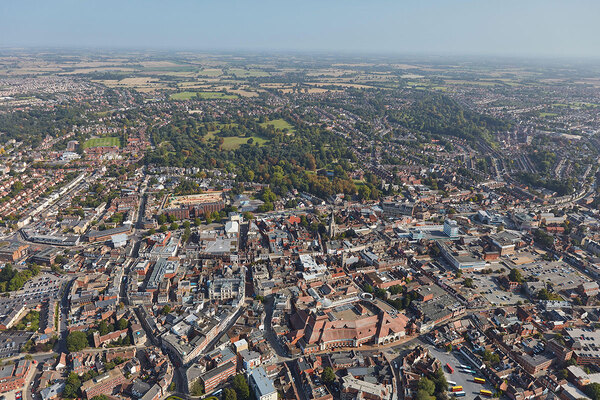Building on history
In order to make sense of the present we need to understand the past. The buildings that surround us did not arrive by accident; they are the result of political and policy decisions that often involved months and years of public debate. But the best buildings are often those that were founded on a strong vision about creating a better future.
Tomorrow, the Homes for Britain rally takes place in Westmister. Four miles to the north east is the Boundary Estate in Shoreditch. For those who don’t know, it replaced the slums of the Old Nichol that were graphically portrayed in William Morrison’s novel ‘A Child of the Jago’ (there is now a trendy retro shop of that name nearby). It was the first major London County Council estate and was built as a result of the Housing of the Working Classes Act of 1890, which allowed local authorities to clear slums and build new homes. It comprises twenty majestic six-storey blocks radiating from the raised mound of Arnold Circus, (which was created from the rubble of the Jago slums). It is designed in the arts and crafts style and was completed in 1900. The brickwork is beautiful. It’s only a few minutes walk from Liverpool Street station and if you are in the neighbourhood I urge you to go and look at it.
Just three years after it was built Jack London published “The People of the Abyss”, his account of the terrble conditions in the East End. The Boundary Street estate showed that municipal action could help to turn the tide against poverty and poor housing.
Thanks to the wonderful people at Municipal Dreams I was referred to W.Thompson’s Housing Handbook of 1903 and have been able to uncover the financial history of the Boundary estate.
The bare facts are these: 1,044 flats were built, ranging from one to six bedrooms, plus a laundry, workshops and shops. Rents in 1900 ranged from 3/6 (17.5p) a week for a one-bed flat to 14 shillings (70 pence) a week for a six-bed flat. In today’s money, allowing for inflation, that’s £18.80 to £75 a week. Of course land, labour and materials were cheaper then, and rent and house price inflation have not followed the same trajectory as general inflation.
But it’s when you look at the construction costs and subsequent rent flows that it becomes interesting. The flats cost £280,000 to build and the land cost was £61,760, a total of £341,760 or £36.6 million in today’s money. So each flat cost less than £327 to build, which is £35,000 at today’s prices.
The annual income from rents was £20,343 (£2.183 million today). Since Right to Buy was introduced in 1980 about half of the flats have been sold. Even so, the ratio of capital cost to annual income during its first 80 years was around 17 to 1. So in very crude terms the scheme paid for itself after seventeen years. Of course you need to work out the net income to calculate how soon the scheme would ‘wash its face’ as development staff would say. But even after deducting management, maintenance, capital refurbishment and other costs the scheme must have paid for itself several times over. Had this been a private estate the surplus (or profit) would have gone into the pockets of shareholders, but this being a municipal scheme the surplus, subject to Treasury intervention, has been re-invested in other council-built homes in Tower Hamlets.
That is the beauty of social rented housing – tenants and taxpayers of the past pay for current schemes, and inflation wipes away historic debts. It is truly a communal enterprise that benefits everyone - the tenant, the taxpayer and wider society. A quick look at the global accounts of housing providers shows that historic debt, including grant, is a fraction of current realisable values. Taken as a whole the entire enterprise is in surplus because of the long historical timeline. There is no more profitable form of public investment than investment in real estate. Above all, the low rents that arise from the absence of siphoned-off profits, allow people to work without being trapped on benefits.
History also shows us that private housebuilders on their own cannot meet the need for new homes. The last time they built more than 200,000 homes a year was in 1968 and only in seven of the forty six years since then have they built more than 150,000 homes a year. Regardless of demand-side stimulii like Help to Buy or Starter Homes they simply will not boost their production to meet either need or demand. This is why direct government investment, preferably in the form of social rented housing, is the missing element that must form a key part of any future housing programme and why the SHOUT campaign is so important. Fixing the housing crisis within a generation is a noble ambition, but the only way we can build more than 200,000 homes a year is by including a significant role for social housing.
The history lesson is as clear as it could be. Social rented housing works. It eases pressure on the private rented sector, it helps to reduce the housing benefit bill (even Policy Exchange admits that social housing saves £3 billion a year on HB) and it rescues people from bad housing conditions, providing decent homes at rents people can afford. Most importantly, it pays for itself over time and becomes a valuable public asset that produces “profits” for the public good. It proves the point that the best concepts should never be allowed to die, they just need to be re-discovered and re-made to meet modern requirements. Just because a concept is old doesn’t mean it is old fashioned and irrelevant to present day problems.









